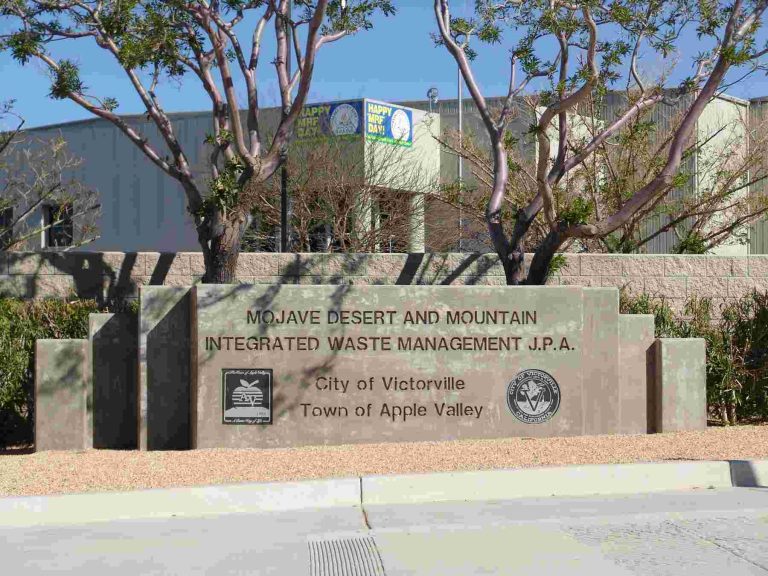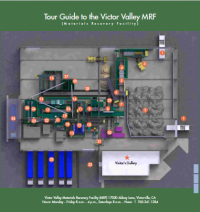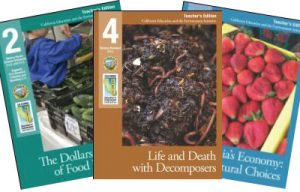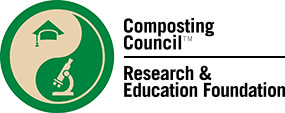RECYCLING AT SCHOOL
Helping the next generation take action to reduce, reuse, and recycle.
RECYCLING AT SCHOOL
Helping the next generation take action to reduce, reuse, and recycle.
Why Your School Should Recycle

RECYCLING HELPS THE ENVIRONMENT
When you recycle you conserve valuable natural resources. Using recycled materials to make new products saves energy and reduces the amount of air and water emissions produced during the manufacture of new products.
![]()
RECYCLING KEEPS THE HIGH DESERT AREA BEAUTIFUL
We live in a unique and delicate ecosystem that is continuously threatened by humans. Returning high-quality recycling to redemption centers reduces litter in public places and helps keep our environment healthy and beautiful.
![]()
KIDS ARE THE FUTURE
Getting children excited by — and participating in — recycling is vital to California’s (and our planet’s) future. Encouraging best practices now ensures that the next generation will be thoughtful stewards of our natural resources.
![]()
RECYCLING DIVERTS WASTE FROM LANDFILL
Californian’s throw away about 5 pounds of trash per day. Proper recycling keeps valuable material out of the garbage stream and lowers the amount of waste sent to landfills. We all benefit from that!
![]()
IT’S THE LAW
For most California schools recycling and organics recycling isn’t just good practice, it’s the law. Learn more here.
SCHOOL RECYCLING
How to Start a School Recycling Program
Every school should consider setting up a recycling program to cut down on waste and the overhead of disposal.
Setting up recycling is a simple matter of organization and commitment and you can always reach out to your hauler’s recycling coordinator for resources to help you develop a successful program.
Take the initiative and get a program started in your school today by following these five simple steps.
Step 1: Perform a Waste Assessment
A waste assessment is a survey of what recyclable materials are discarded and where. Take a stroll through your school and record what types of waste are discarded in each area. This walk-through lets you figure out what containers you’ll need. Here are typical materials that be recovered from different areas in most schools:
- Classrooms – mixed paper, newspaper, glass, metal and plastic containers
- Library – newspaper, magazines, mixed paper, books
- Administrative offices – office paper, mixed paper, cardboard, cans, bottles, toner cartridges
- Food service areas – glass, metal, cans, plastic containers, cardboard (food waste can be separated and composted; grease and oil may be converted into biodiesel)
- Outdoor & Public areas – newspaper, magazines, bottles, cans
This is also a great opportunity to determine if your school should start a CRV program to collect and return eligible beverage containers for cash. Read more about CRV here.
Step 2: Setup Recycling Containers
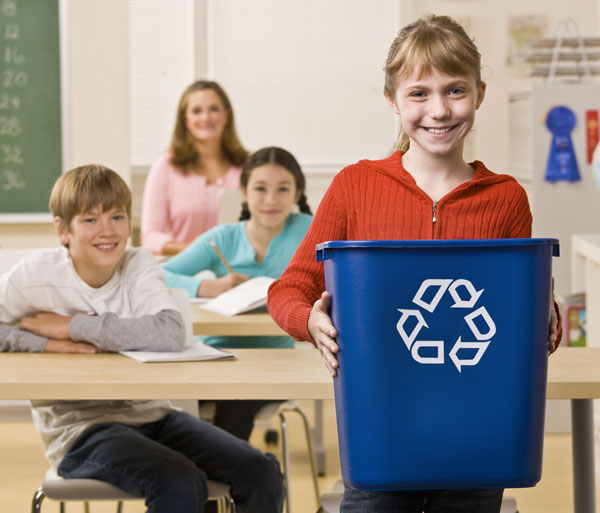 Based on the results of the waste assessment, put recycling containers for each material in each area. To begin, you might want to focus your efforts where you have found the most waste.
Based on the results of the waste assessment, put recycling containers for each material in each area. To begin, you might want to focus your efforts where you have found the most waste.
Location and good labeling are critical to every recycling program. Be sure that containers are well-marked. For public areas, you might want to consider special containers that indicate the type of recyclable with a hole or a slot. This will reinforce the goals of your program and reduce contamination (mixing) of recyclables.
Step 3: Establish Collection Procedures
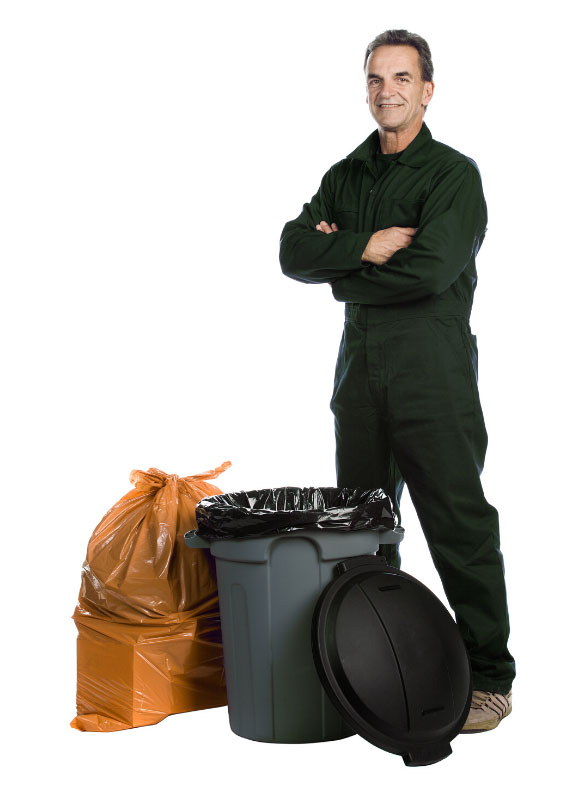 Once you know what will be collected and where, get your custodial staff and groundskeepers involved. Have a meeting to explain to them the importance of recycling and to answer their questions. Show them where to locate new containers, how to collect waste separately, and where to take separated materials.
Once you know what will be collected and where, get your custodial staff and groundskeepers involved. Have a meeting to explain to them the importance of recycling and to answer their questions. Show them where to locate new containers, how to collect waste separately, and where to take separated materials.
Step 4: Publicize Your Project
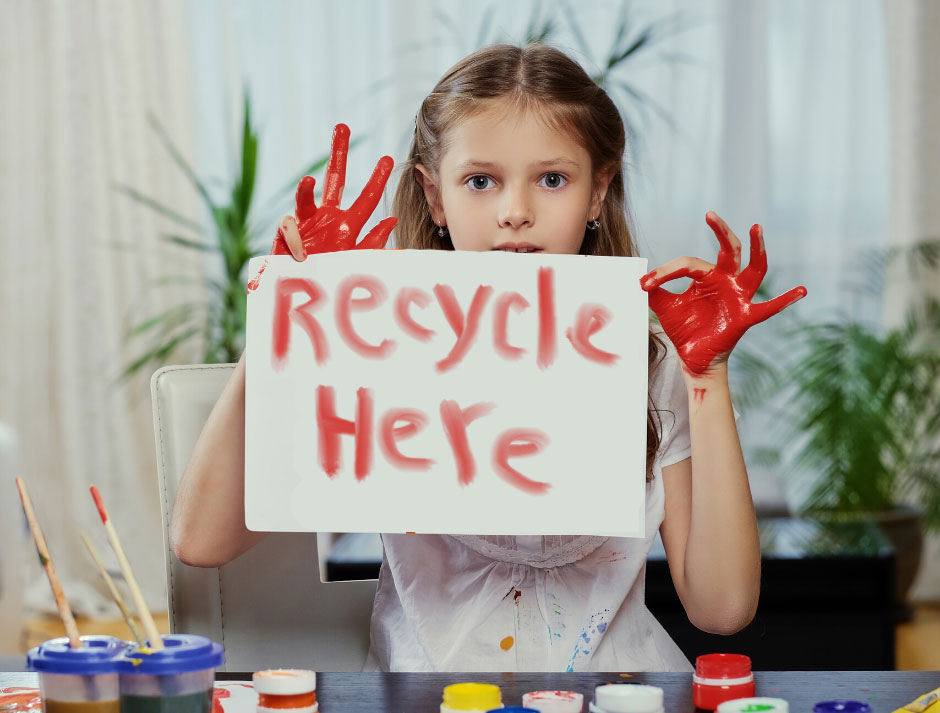 Once your container, labels, and collection procedures are in place, communicate your program to students and employees.
Once your container, labels, and collection procedures are in place, communicate your program to students and employees.
Host a kick-off party for teachers and administration.
An assembly is a great way to start your program. Then, get students involved by introducing classroom activities about recycling. Have them make posters and instructions to share.
Remember: one presentation is not enough. Be sure to reinforce the goals, principles, and procedures of your program. This will ensure that your procedures are being followed, will help people remain interested, and provide a forum for questions and new solutions. You can also put information or notices in e-mail, on the school’s web site, or in the school newspaper.
Step 5: Monitor Your Results
Create a system for keeping track of the amount of materials your program collects. This will help you know you’re receiving proper compensation for your materials and will help you take appropriate action if volumes decrease. Be sure to get your custodial staff involved in this process, and develop a feedback system so that they can let you know where contamination is a problem.
Recyclables Accepted Curbside
There are four main categories of items that can be recycled in most curbside recycling programs or dropped off at a local recycling facility:
- Paper & Cardboard
- Glass Bottles & Jars
- Metal Cans & Trays
- Plastic Bottles & Containers
It’s important to follow your town or county’s recycling rules, check with your hauler to make sure you’re recycling right.
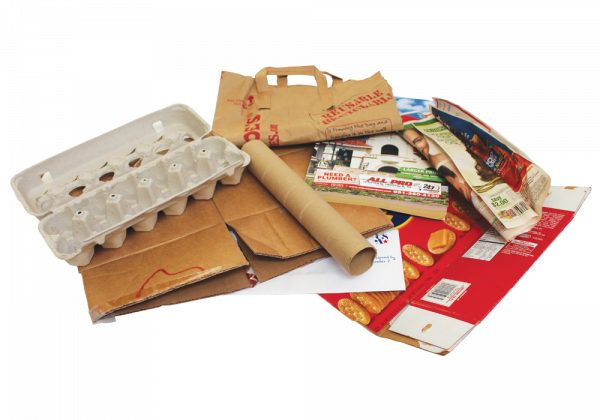
Paper and Cardboard
- White and colored office paper
- Photocopy paper
- Computer paper
- Junk mail/Catalogs
- Phone books
- Newspapers/Magazines
- Corrugated cardboard
- All other clean, dry paper
Paper and Cardboard Recycling Tips
- Clean, dry, and free of food waste
- Flatten boxes
- Remove liners from cereal/food boxes
- Plastic window envelopes and staples are okay
- No spirals from notebooks
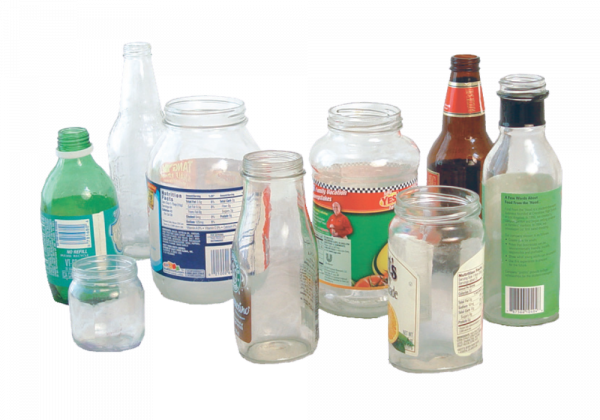
Glass Bottles & Jars
- Glass bottles and jars of any color, shape or size
Glass Bottles & Jars Recycling Tips
- Clean, dry, and free of food waste
- Remove lids
- Learn how to get a refund on eligible containers
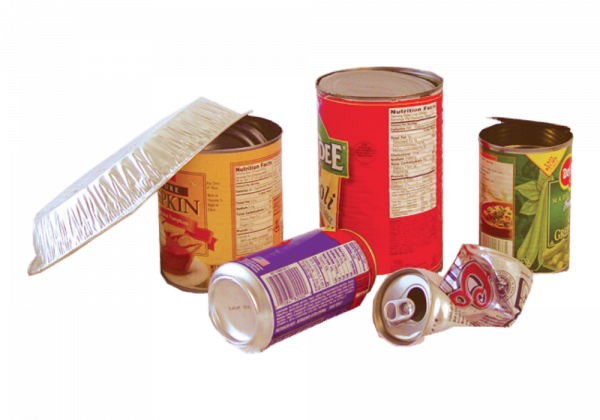
Metal & Aluminum Cans
- Tin cans
- Aluminum cans, foil, and trays
Metal & Aluminum Recycling Tips
- Clean, dry, and free of food waste
- Aerosol cans must be empty of pressure and product
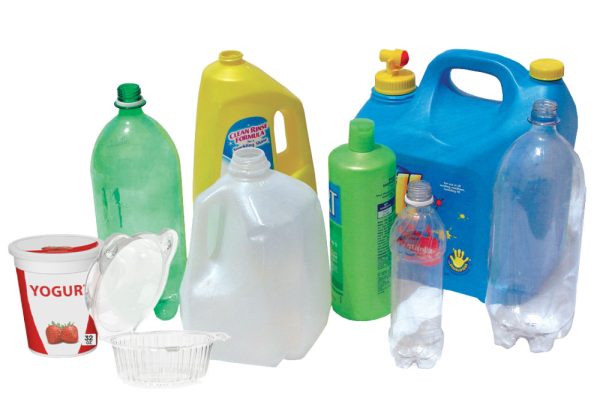
Plastic Bottles & Containers
- Rigid containers (#1, #2, #5)
- PET (#1) plastic bottles and clear clamshells
- HDPE (#2) plastic bottles and containers
- PP (#5) plastic bottles and containers
Plastic Bottles & Container Recycling Tips
- Clean, dry, and free of food waste
- No Styrofoam™
- No plastic bags or plastic wrap of any kind
- Lids are okay to leave on
- Learn how to get a refund on eligible containers
School Waste Reduction
Whether you are a school district administrator concerned about increases in solid waste disposal costs, a recycling-conscious teacher or student, or a city/county recycling coordinator working with your local school district, setting up or improving an existing school waste reduction program can benefit everyone involved. Additionally, in most cases, school recycling is a state requirement for traditional recyclables as well as for organic wastes.How Recycling Works
Recycling is circular. A material is manufactured into a product which goes to a store, where you buy it. You use the product — and hopefully reuse it — then put it in your recycling cart. From there it is collected and taking to a processing plant where it turned back into base materials which a manufacturer uses to create something new. And the cycle starts again.
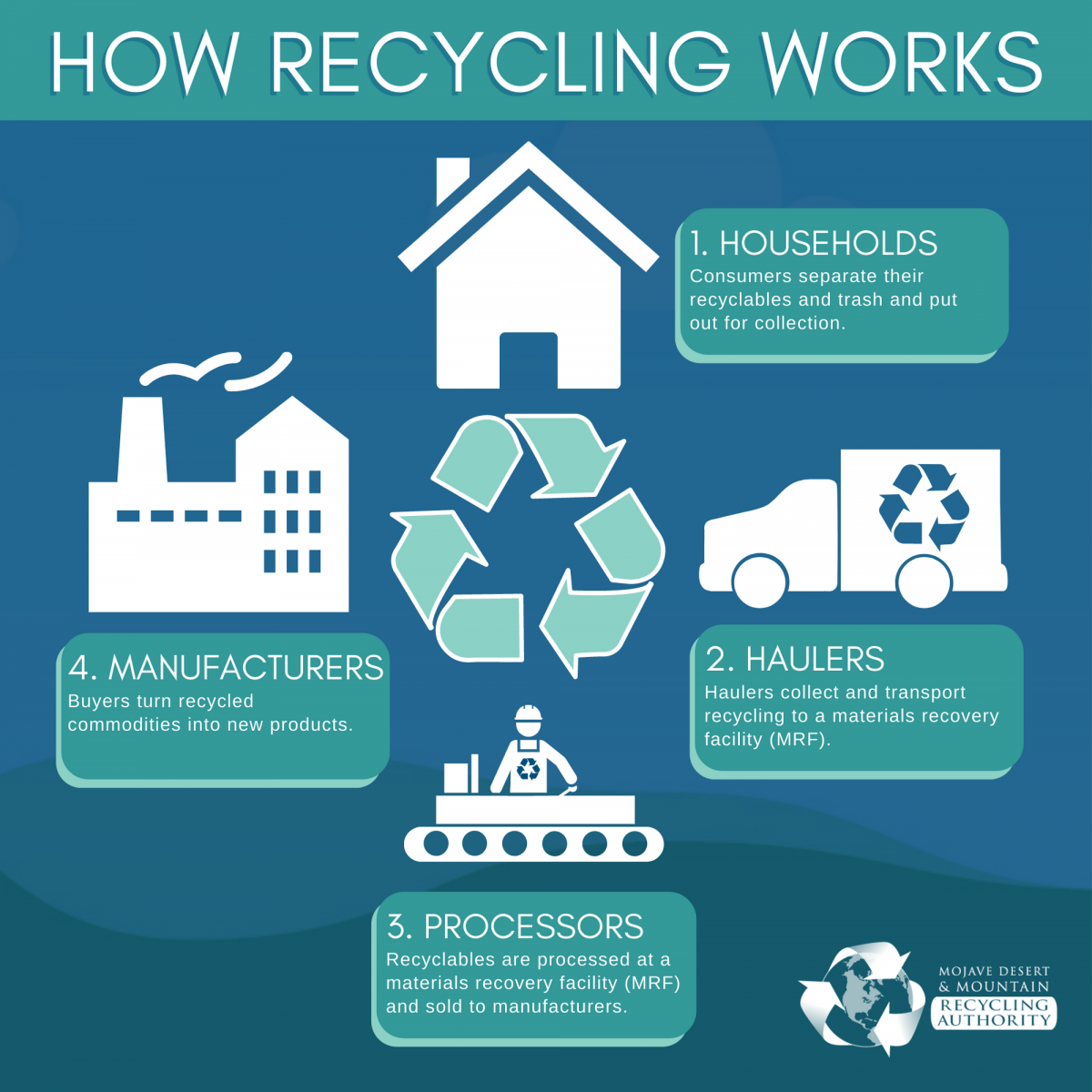
Where Does Our Recycling Go?
Materials Recovery Facility
The MRF (pronounced “mirf”) is an intermediate processing center— sorting mixed recyclables into separate categories: newspaper, cardboard, other mixed papers, glass, steel cans, aluminum cans, PET plastics, HDPE plastics, and more. Once the recyclables are sorted (and compacted into bales), they are then ready to be shipped to businesses to be made into new products.Victor Valley Materials Recovery Facility
Most communities in the High Desert and Mountain area are served by the Victor Valley Materials Recovery Facility (MRF)
The MRF is the “middleman” between residents who separate recyclables, and the industries which use recyclable materials to make new products.
The MRF is owned by the Town of Apple Valley and City of Victorville; administered by the Mojave Desert and Mountain Recycling Authority; and operated by Burrtec Waste Industries.
Victor Valley Materials Recovery Facility (MRF)
17000 Abbey Lane, Victorville, CA
Hours:
Monday – Friday 8am – 4pm
Saturdays 8am – 12pm
Phone: (760) 241-1284
Get the Victory Valley MRF Guide
This guide introduces you to the MRF and how recycling materials are processed at the facility.
Take a Virtual Tour of the Victor Valley MRF
Curiosity Quest Visits the Victor Valley MRF
Watch as Joel Greene of Curiosity Quest provides a family-friendly tour of the Victor Valley MRF.
Recycling Laws
Recycling At School Is Great. It’s Also The Law.
Most schools are required by California law to participate in both recycling and organic recycling (composting).
Recycling Resources for Teachers
Recycling Activities & Lesson Plans
California Education and the Environment Initiative (California EEI) Curriculum
The California Education and the Environment Initiative (California EEI) Curriculum teaches science and history-social science, using the environment as a context for learning. This engaging curriculum is designed to increase environmental literacy, and help students become critical thinkers, informed decision makers, and leaders for the future. The EEI Curriculum is available to California educators in print and online at no cost.
Source: California EEI
Free Recycling Lesson Plans
Fun recycling lesson plans teach about the importance of stewardship and conservation and connect to standards in science, math, and reading for grades 1–8. They use the popular 5E lesson plan model, so you know they’re hands on and easy to adapt for your classroom!
Source: WeAreTeachers.com
PBS Multi-Media Lesson Plans
Try these media-rich lessons that explore the topics that connect technological, biological, and scientific fields. Lessons on topics such as recycling and waste management include multi-media presentations and worksheets for all ages.
Source: PBS LearningMedia
Pack A Waste-Free Lunch
This Waste-Free Lunch activity helps students learn how to reduce, reuse, and recycle items in their school lunches. They provide activity instructions and printable materials — everything you need to get your class participating in a waste-free lunch day. Grades 1-8.
Source: U.S. Environmental Protection Agency
Resources for Teachers
The Mojave Environmental Education Consortium (MEEC) aims to improve the environmental literacy of students, teachers, and communities of the Mojave Desert Region by actively providing educational resources including transportation and mini-grants, and environmental library, curriculum and scholarship information, a speakers’ bureau, and teacher links focused on the High Desert environment.
The City of Victorville Environmental Programs Division can help you set up a school recycling program and offers free tours and in-class presentations. Call their Recycling Hotline at (760) 955-8615 for help with your recycling.
Learn more at the victorvillca.gov website.
Closing the Loop is CalRecycle’s interdisciplinary standardized K-6 curriculum emphasizing waste prevention, recycling, composting, and vermicomposting through hands-on activities.
CalRecycle also maintains an instructional materials page and more educational resources and information.
The also offer waste reduction strategies for each department within a School District.
The California Environmental Protection Agency’s Education and the Environmental Initiative (EEI) is a K-12th grade curriculum comprised of 85 units teaching select Science and History-Social Science academic standards. Each EEI Curriculum unit teaches these standards to mastery using a unique set of California environmental principles and concepts.
The U. S. Environmental Protection Agency lists environmental education resources that can be ordered online, by telephone, or downloaded.
The US EPA’s waste education materials includes basic facts, materials and information about composting and recycling, curriculum, activities, awards, and grants.
Be sure to check out their resources for students and educators on reducing, reusing, and recycling.
The CREEC Network, a program of the California Department of Education, fosters regional partnerships throughout the state of California to promote environmental education and environmental literacy by providing teachers with access to high quality professional learning opportunities and education resources.
How to Compost at School
School gardens provide an excellent opportunity for teachers to extend these lessons outside of the classroom to reinforce concepts about nutrient cycles, food production, decomposition, water conservation and more.
Composting is an effective and efficient way to dramatically reduce your school’s waste stream , while doing your part to reduce your carbon footprint. Organic material sent to landfill creates methane, a powerful greenhouse gas that contributes to the negative impacts of our changing climate. By making compost, you are creating a valuable soil amendment that you can use to benefit your landscape, boost plant growth and sequester carbon.
Both new and established gardens benefit from the use of compost and mulch. Many schools purchase compost when they initially establish their garden, then they start making their own compost. You can use grass clippings, yard trimmings, rotten vegetables, and in some cases even food scraps from the cafeteria and/or students’ lunches. While some schools choose to make compost piles in the garden, others compost with worm boxes right in the classroom!
Similar to “backyard” or home composting, schools can compost using an enclosed bin or tumbler, in an easily made bunker, or using a no-fuss pile. The key is to blend your feedstocks to achieve a balance of carbon and nitrogen, keep things damp but not saturated, and ensure adequate oxygen deep in the pile. The microbes will do the rest.
Visit our Composting page to learn more about the different methods of composting.
Visit CalRecycle’s Compost page to learn more about composting techniques.
Composting with Worms
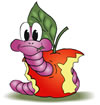 Download The Worm Guide: A Vermicomposting Guide for Teachers from CalRecycle to learn how to start and maintain a successful classroom worm bin. Includes the basics of vermicomposting, worm bin building plans, troubleshooting and fundraising tips, classroom activities, and useful case studies of other successful vermicomposting programs.
Download The Worm Guide: A Vermicomposting Guide for Teachers from CalRecycle to learn how to start and maintain a successful classroom worm bin. Includes the basics of vermicomposting, worm bin building plans, troubleshooting and fundraising tips, classroom activities, and useful case studies of other successful vermicomposting programs.
Check out CalRecycle’s Worm Facts for more information about Vermicomposting.
Visit our Composting page to learn more about the different methods of composting.
School Composting Resources
California School Garden Network
A wealth of information on how to start a school garden, linking school gardens to California Education Standards, funding, and so much more, is available from the California School Garden Network.
Composting Council Research & Education Foundation
On this page you’ll find links to numerous educational resources on composting supporting the Composting Council’s International Compost Awareness Week which occurs during the first week of May each year.
Make Money for Your School by Recycling
California Refund Value (CRV)
Recycle eligible beverage containers and make money for your school.
Every time you purchase an eligible beverage container from a retailer in California, you pay a nickel or dime deposit on that container. The California Redemption Value, or CRV, is the deposit return system that allows you to return those empty bottles and cans to a recycling location to get back the deposit you paid.
Collecting your school’s beverage containers and returning them to a redemption center is a great way for kids to learn about the value of recycling and make money for your school.
What type of beverage containers can you return for a refund?

Glass, aluminum, bimetal and plastic containers including:
- Beer and Malt Beverages
- Wine Coolers
- Carbonated Fruit Drinks, Water, or Soft Drinks
- Noncarbonated Fruit Drinks, Water, or Soft Drinks
- Coffee and Tea Beverages
- 100% Fruit Juice less than 46 oz.
- Vegetable Juice 16 oz. or less
TIP: To get the full refund value for your containers, they must be sorted and clean of contaminants. Make sure the containers are dry and clear of any food debris prior to returning them for CRV.
How much money can my school make?
If you have less than 50 containers of one type, your refund will be a nickel or dime (depending on size) for each container. If you bring more than 50 containers of a particular type, your containers are weighed and converted for refund value.
Think about how many beverage containers your school goes through in a day? It could add up to a lot!
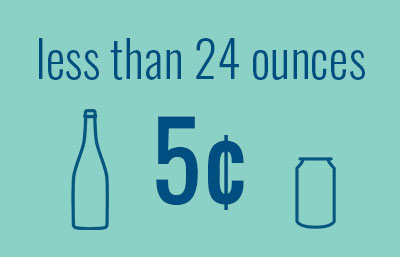
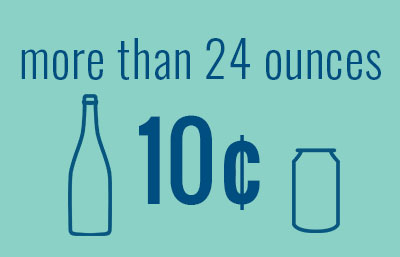
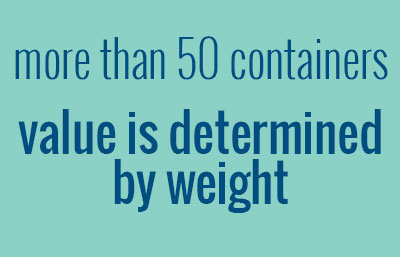
How many containers can we redeem at one time?
You may bring up to 100 pounds of aluminum and plastic or 1,000 pounds of glass on a single visit to a Recycling Center.
Find a Recycling Center
To find a certified Recycling Center near you, use the searchable Beverage Container Recycling Centers database from CalRecycle below. You can also visit the CalRecycle website to find it.
Contact Your Local Recycling Coordinator
Your hauler’s recycling coordinator may be able to assist you in the creation of a CRV program at your school. Give them a call!Recycling Activities for Kids
Recycling Activities & Games for Kids
Recycling Tool Kit
We’ve put together this fun tool kit for kids to participate in fun and educational recycling activities. Try the word search game or making your own recycling box to help your family sort materials.
Source: Mojave Desert & Mountain Recycling Authority (that’s us!)
Recycle City
Explore Recycle City to see how the people of the town reduce waste, use less energy, and even save money by doing simple things at home, at work, and in their neighborhoods.
Source: U.S. Environmental Protection Agency
Recycle Roundup
Help clean up the park! Try this game where your job is to sort the stuff people throw away and put it in the proper bin. Is it recycling, compost, or trash?
Source: National Geographic Kids
Copyright © 2025 Mojave Desert & Mountain Recycling Authority. All Rights Reserved.


